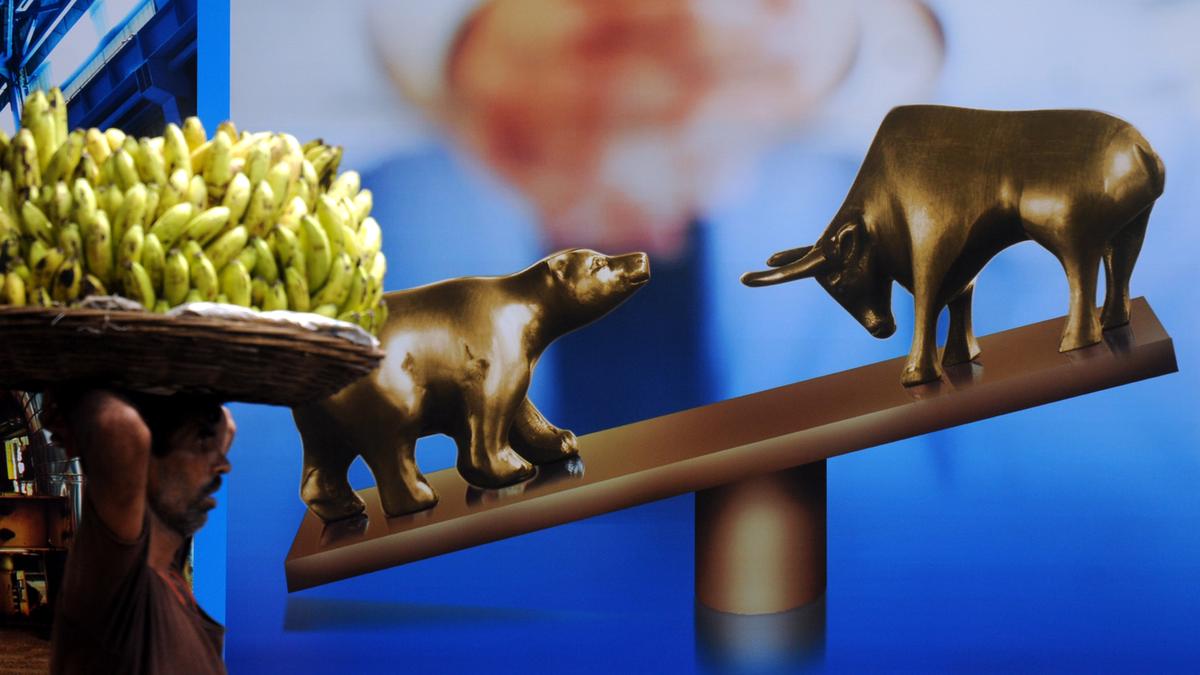
Sensex sinks below 75,000 mark on weak U.S. markets, FII outflows
The Hindu
BSE Sensex falls over 1% below 75,000 amid US tariff concerns, foreign fund outflows, and global market trends.
Falling for the fifth day in a row on Monday (February 24, 2025), equity benchmark BSE Sensex tumbled over 1 per cent to drop below the crucial 75,000 level, tracking a US market trend and unabated foreign fund outflows amid concerns over U.S. tariffs.
The 30-share BSE benchmark tanked 856.65 points or 1.14% to settle at 74,454.41. During the day, it plummeted 923.62 points or 1.22% to 74,387.44.
The NSE Nifty dropped 242.55 points or 1.06% to 22,553.35.
In the last five trading sessions, the BSE barometer lost 1,542.45 points or 2%, and the Nifty tanked 406.15 points or 1.76%.
From the Sensex pack, HCL Tech, Zomato, Tata Consultancy Services, Infosys, Tech Mahindra, Bharti Airtel, Tata Steel and NTPC were among the biggest laggards.
In contrast, Mahindra & Mahindra, Kotak Mahindra Bank, Maruti, Nestle and ITC were among the gainers.
Foreign Institutional Investors (FIIs) offloaded equities worth ₹3,449.15 crore on Friday, according to exchange data.

According to the United Nations’ Conference on Trade and Development (UNCTAD), the underlying logic of credit rating agencies is to avert the information asymmetry between borrowers and lenders about the latter’s creditworthiness. It further explains that issuers with lower credit ratings pay higher interest rates – reflective of the greater associated risk with lending to them, than the higher rated issuers.

According to the United Nations’ Conference on Trade and Development (UNCTAD), the underlying logic of credit rating agencies is to avert the information asymmetry between borrowers and lenders about the latter’s creditworthiness. It further explains that issuers with lower credit ratings pay higher interest rates – reflective of the greater associated risk with lending to them, than the higher rated issuers.











